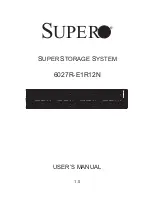
6
forwards a packet, it identifies whether loops exist on the forwarding path based on the source and
destination physical interfaces and the IRF topology. If a loop exists, the device discards the packet
on the source interface of the looped path. This loop elimination mechanism will drop a large number
of broadcast packets on the IRF physical interfaces. When you use SNMP tools, do not monitor
packet forwarding on the IRF physical interfaces to reduce SNMP notifications of packet drops.
Master election
Master election occurs each time the IRF fabric topology changes in the following situations:
•
The IRF fabric is established.
•
The master device fails or is removed.
•
The IRF fabric splits.
•
Independent IRF fabrics merge.
NOTE:
Master election does not occur when two split IRF fabrics merge. All member devices in the
Recovery-state IRF fabric automatically reboot to join the active IRF fabric as subordinate members.
The master device of the active IRF fabric is the master device of the merged IRF fabric.
Master election selects a master in descending order:
1.
Current master, even if a new member has higher priority.
When an IRF fabric is being formed, all members consider themselves as the master. This rule
is skipped.
2.
Member with higher priority.
3.
Member with the longest system uptime.
Two members are considered to start up at the same time if the difference between their startup
times is equal to or less than 10 minutes. For these members, the next tiebreaker applies.
4.
Member with the lowest CPU MAC address.
For the setup of a new IRF fabric, the subordinate devices must reboot to complete the setup after
the master election.
For an IRF merge, devices must reboot if they are in the IRF fabric that fails the master election.
Multi-active handling procedure
The multi-active handling procedure includes detection, collision handling, and failure recovery.
Detection
MAD identifies each IRF fabric with a domain ID and an active ID (the member ID of the master). If
multiple active IDs are detected in a domain, MAD determines that an IRF collision or split has
occurred.
For more information about the MAD mechanisms and their application scenarios, see "
."
Collision handling
When MAD detects a multi-active collision, it sets all IRF fabrics except one to the Recovery state.
The fabric that is not placed in Recovery state can continue to forward traffic. The Recovery-state
IRF fabrics are inactive and cannot forward traffic.
LACP MAD and BFD MAD use the following process to handle a multi-active collision:
1.
Compare the number of members in each fabric.
2.
Set all fabrics to the Recovery state except the one that has the most members.













































